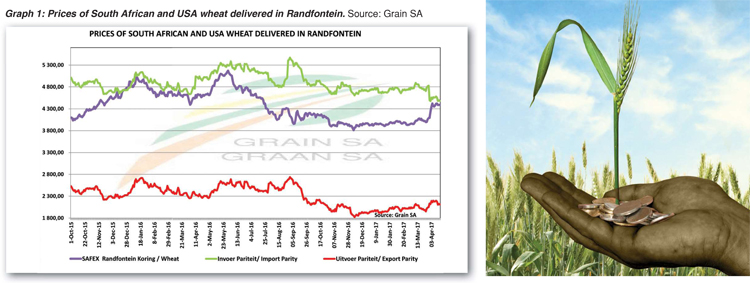June 2017
Wheat production is one of the most important crops in South Africa. Most wheat produced in South Africa is used for human consumption with very little used for animal feed. In general, local wheat production has declined over the years. However, in the 2016/2017 marketing season, wheat production increased by 30,2%.
The annual average total commercial demand for wheat amounts to 3 million tons, while the average production is 1,7 million tons; it is clear then, that local production is outpaced by local consumption. South Africa therefore relies on imports in order to meet total demand. Currently, South Africa’s import demand for the 2016/2017 season is estimated at 1,2 million tons while exports are estimated at 110 000 tons. The country is therefore a net importer of wheat.
Wheat market structure
Since South Africa is a net importer of wheat, local wheat prices have to compete with international prices known as import and export parity. The import parity price is the price that it will cost the importing country to buy the product and gets it delivered at a specific delivery point. This will normally happen when there is a shortage in production, such as the case of wheat in South Africa. The export parity price on the other hand is the price that a country will receive when exporting the product to another country. Due to South Africa’s net importer status and the constant shortage of wheat, South Africa’s wheat prices therefore trades towards the import parity band (see Graph 1).
Since the local prices trade towards the import parity, it is clear that local wheat prices are largely driven by the international market. The exchange rate also has an effect on parity prices which in turn have an influence on wheat prices. A weaker exchange rate, supports wheat prices, while a stronger exchange rate, places pressure on the prices.
As a wheat farmer, it is therefore important to understand international market factors and the movements of the local currency as these two factors have an influence on local wheat prices.

Article submitted by by Michelle Mokone, Agricultural Economist: Grain SA. For more information, send an email to Michelle@grainsa.co.za.
Publication: June 2017
Section: Pula/Imvula